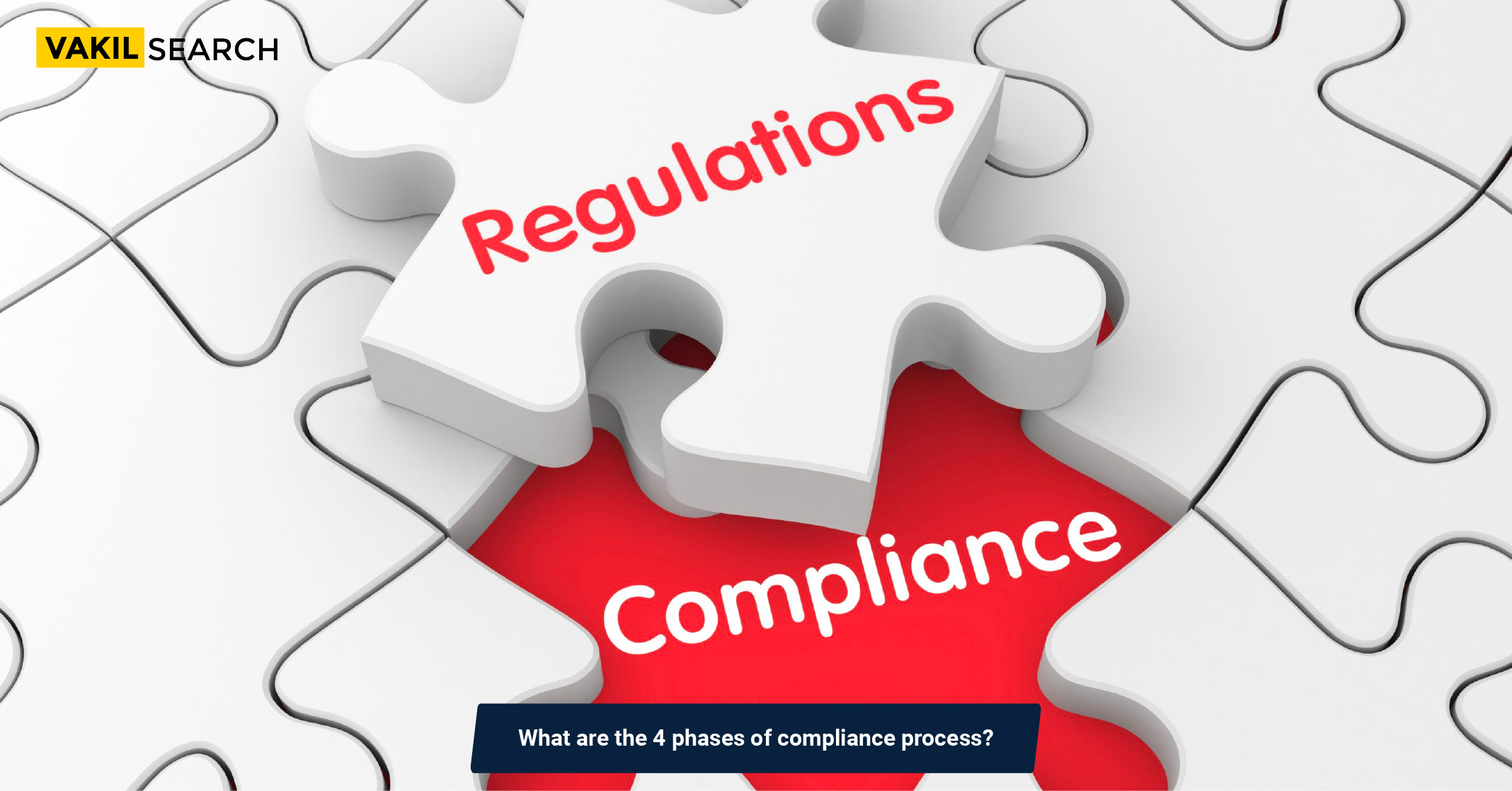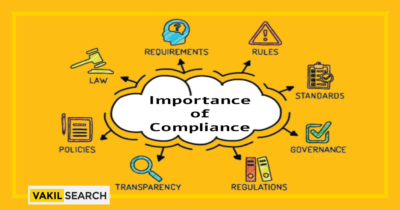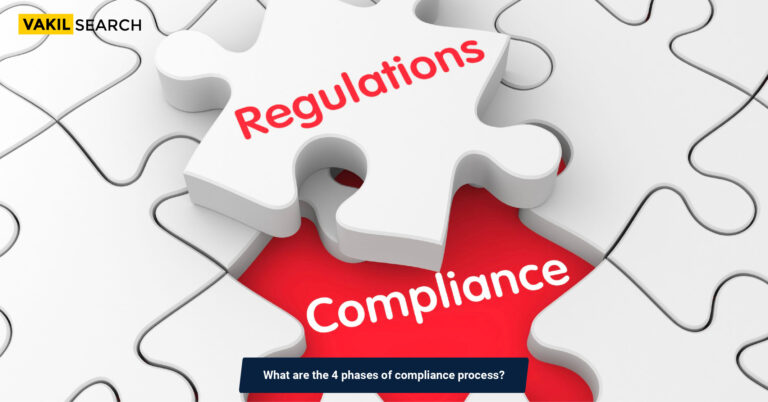Discover the pivotal four phases of the compliance process, from Risk Assessment to Adaptation and Improvement. Talk to experts today!
Compliance is a critical aspect of any organisation’s operations, ensuring adherence to legal and regulatory requirements. The compliance process involves a series of distinct phases, each crucial for maintaining organisational integrity and performance. In this article, we will see the 4 phases of the compliance process, providing a comprehensive understanding of each. We’ll delve into the explanation, significance, challenges, and best practices associated with each phase. Visual aids such as flowcharts will be used to enhance understanding.
Introduction to the 4 Phases of the Compliance Process
Before we dive into the 4 phases of the compliance process, it’s essential to understand what the compliance process entails. The compliance process is a systematic approach that organisations follow to ensure they conform to relevant laws, regulations, and industry standards. It involves a series of steps that aim to identify, assess, monitor, and manage compliance risks within the organisation.
Phase 1: Risk Assessment and Planning
The first phase involves identifying and assessing the potential risks related to compliance that an organisation might face. This includes understanding the regulatory landscape, the specific requirements relevant to the industry, and any potential areas of non-compliance.
Significance
- Helps in understanding compliance requirements: By conducting a thorough risk assessment, organisations can pinpoint the specific compliance requirements they need to adhere to.
- Enables proactive planning: Understanding the risks allows for the development of strategies to mitigate these risks effectively.
- Sets the foundation for the compliance program: The risk assessment phase is the bedrock upon which the entire compliance program is built.
Challenges
- Inadequate understanding of regulatory landscape: Keeping up with the rapidly evolving regulatory environment can be challenging.
- Lack of resources for comprehensive risk assessment: Small organisations might struggle to allocate resources for a detailed risk assessment.
- Balancing resources and thoroughness: Striking the right balance between comprehensive risk assessment and efficient resource use is a constant challenge.
Best Practices
- Regular Updates on Regulatory Changes: Stay updated with changes in laws and regulations relevant to your industry.
- Collaboration with Legal Experts: Seek advice and collaboration with legal experts who specialise in the regulatory landscape of your industry.
- Utilise Technology: Employ compliance software that helps in tracking regulatory changes and their impact on your organisation.
Phase 2: Implementation and Training
Once the compliance requirements are identified and understood, the next phase involves implementing policies, procedures, and practices to meet those requirements. Additionally, this phase includes training employees to ensure they are aware of and can comply with these policies effectively.
Significance
- Ensures Implementation of Policies: This phase ensures that compliance policies are put into action and integrated into daily operations.
- Empowers Employees: Training empowers employees by providing them with the necessary knowledge and skills to adhere to compliance requirements.
- Reduces Risk of Non-Compliance: Effective implementation and training significantly reduce the risk of non-compliance due to ignorance or lack of understanding.
Challenges
- Resistance to Change: Employees might resist new policies or changes in procedures.
- Ensuring Uniform Understanding: It’s challenging to ensure that every employee understands and implements policies consistently.
- Resource Allocation for Training: Allocating resources for comprehensive training can be resource-intensive.
Best Practices
- Engage Employees in the Process: Involve employees in the development of policies and procedures to ensure their buy-in.
- Regular Training Updates: Keep training materials and sessions up-to-date to reflect any changes in compliance requirements.
- Utilise E-Learning Platforms: Implement e-learning modules for convenient and efficient training of employees.
Phase 3: Monitoring and Testing
Monitoring and testing involve continuously assessing the organisation’s operations to ensure compliance with the established policies and procedures. This can include regular audits, reviews, and checks to verify compliance.
Significance
- Ensures Ongoing Compliance: Regular monitoring helps in maintaining continuous adherence to business compliance requirements.
- Identifies Gaps and Issues: Monitoring allows the organisation to identify any gaps in compliance and take corrective action promptly.
- Demonstrates Accountability: Regular testing and monitoring demonstrate to stakeholders that the organisation is committed to compliance.
Challenges
- Resource Intensive: Continuous monitoring and testing require dedicated resources, which can strain the organisation’s budget.
- Complexity of Compliance: The complexity of some compliance requirements can make monitoring and testing a challenging task.
- Balancing Act: Striking the right balance between monitoring and daily operations without disruptions can be difficult.
Best Practices
- Automate Monitoring Processes: Utilise compliance software that can automate monitoring tasks, making them more efficient and less resource-intensive.
- Regular Internal Audits: Conduct regular internal audits to ensure that all areas of compliance are being effectively monitored.
- External Independent Audits: Periodically engage external auditors for an impartial assessment of compliance practices.
Phase 4: Adaptation and Improvement
The final phase of 4 phases of the compliance process involves analysing the data and feedback collected during the previous phases to identify areas for improvement. It’s about learning from experiences and making necessary adjustments to enhance the compliance process continually.
Significance
- Ensures Long-Term Relevance: By adapting to changes, the organisation remains relevant and compliant in an evolving regulatory landscape.
- Promotes a Culture of Continuous Improvement: Fosters a culture where the organisation is committed to improving its compliance processes continually.
- Enhances Efficiency: By making improvements, the organisation can streamline processes and allocate resources more efficiently.
Challenges
- Resistance to Change: Resistance from employees or stakeholders to adapt to new practices or improvements.
- Resource Constraints: Budget or resource constraints might limit the organisation’s ability to implement necessary improvements.
- Lack of Data Analysis Skills: Insufficient expertise in analysing the collected data to derive meaningful insights for improvements.
Best Practices
- Cross-Functional Collaboration: Encourage collaboration across different departments to gain diverse perspectives on potential improvements.
- Feedback Mechanisms: Establish feedback loops to gather insights from employees and stakeholders regarding potential areas for enhancement.
- Regular Performance Metrics Analysis: Use performance metrics to identify trends and areas that require improvement.
Conclusion
The compliance process is a dynamic and multifaceted journey that organisations undertake to ensure they operate within the boundaries of legal and regulatory requirements. Understanding and effectively implementing the 4 phases of the compliance process – Risk Assessment and Planning, Implementation and Training, Monitoring and Testing, and Adaptation and Improvement – is crucial for maintaining compliance, mitigating risks, and achieving long-term sustainability. By leveraging best practices and incorporating continuous improvement into the compliance process, organisations can navigate the complexities of compliance, thereby securing their operations and building trust with stakeholders.
Collaborating with Vakilsearch can significantly enhance this journey. We guide organisations in understanding the intricate details of compliance requirements. Our specialised insights and assistance can streamline the compliance process, making it more effective and efficient. By leveraging best practices and incorporating continuous improvement into the compliance process, organisations, with the help of Vakilsearch, can navigate the complexities of compliance, thereby securing their operations and building trust with stakeholders.
Read more,










